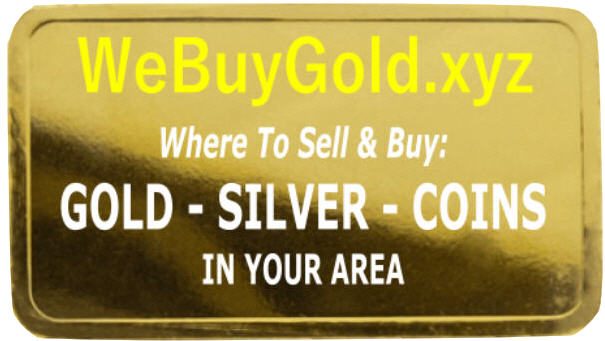- Financial Reasons: Need to pay bills or short on cash?
- Old and Outdated: Did you inherit jewelry you will never wear? No problem, we have buyers listed on our site who will buy all new, used, estate and antique jewelry, regardless of condition.
- Ex relationship: Are you tired of looking at jewelry from your ex relationships? Sell it for some extra spending cash and get them out of your life for good!
- Broken and Mismatched: Do you have broken or mismatched jewelry you will never get fixed? You have come to the right place! We have buyers listed who will buy all precious metal jewelry regardless of the condition.
- Treat Yourself: Want to take a vacation? Send in any gold, platinum, and silver items for some extra cash to put towards a weekend getaway!
First, please understand there is a huge retail mark up on jewelry. That $1,500 bracelet in the display case probably has only one to three hundred dollars worth of gold in it.
Gold jewelry should have the karat marked, usually 10K, 14K or rarely 18K. Separate each item based by karat and weigh. Precious metals are weighed in troy ounces. Digital scales should have a troy ounce setting. Values based on household scale weight will be about 10% under calculated values (28 vs 31.1 grams per ounce). Please note the higher the karat the more valuable your item(s) will be.
Most We Buy Gold stores pay for the value of the gold only. Added value from your items like diamonds, settings and stones usually do not add any extra value. In fact, the store will more than likely deduct the estimated weight of such stones. If you decide to sell to the store most reputable stores will offer to remove the stones for you so you can keep them for potential later usage.
If the store you go to does not want to weigh your items in front of you take your stuff and leave! In many states it is a law that buyers must weigh gold in front of the seller on a high quality scale.
Selling Gold & Silver Coins
Selling gold or silver coins to a coin dealer for the best prices. U.S. silver coins are 90% silver (U.S. dimes, quarters, half dollars or dollars that are dated 1964 or earlier are 90% silver). Canadian Silver coins are 80% silver. Check to see if you have any rare U.S.or Canadian coins. If you do you may get a lot more for them!
When I call my coin dealer I ask him what “multiplier” he is buying and selling 90% silver at today. We both know we are discussing 90% U.S. silver coins; halves, quarters and dimes only, sometimes called “junk silver”. He’ll tell me something like “selling at 18, buying at 14”. For example, today for one dime (0.10) the dealer is will to pay you $1.40 per coin. This is 14X face value. In this example the dealer is willing to sell you a dime for $1.80 each which is 18 times face value. (18xFV).
The History Of 40% Silver Coins. Some of the most renowned coins ever issued by the U.S. mint were produced between 1965 and 1970, and they contain 40% silver. These coins, bearing the profile of President John F. Kennedy, are collectible and sought-after both by collectors and investors.
A gold coin is a coin that is made mostly or entirely of gold. Most gold coins minted since 1800 are 90–92% gold (22 karat), while most of today’s gold bullion coins are pure gold, such as the Britannia, Canadian Maple Leaf, and American Buffalo. Alloyed gold coins, like the American Gold Eagle and South African Krugerrand, are typically 91.7% gold by weight, with the remainder being silver and copper. The condition of circulated gold coins can be important to it’s true value depending on the dealer.
Once you know what your items are worth is time to get on the phone or visit the gold & silver buyers listed on our site. Once there ask them what they are paying for gold or silver today. Call them all and tell them you are calling competitors, and tell them where you found them (webuygold.xyz). It can pay to check pricing from different buyers as the price can vary by 20% or more.
The Low Down
Forget the Spot Price – You will never get the spot price for your items. The individual seller is the bottom of the food chain in the metals market. Dealers have to buy below spot price to stay in business. In most states the dealer is highly regulated by state and local laws and are required to hold onto your items for several days or weeks before they can sell them. This creates risk for the Dealer as metal prices can fall while they wait to sell your item to a refinery. Dealers Sell most of their goods to the refiners, and refiners buy below the spot price. Keep in mind the Dealer/Business has labor, taxes, insurance and many other associated costs which they have to cover. This is why in most cases the value offered for your jewelry item(s) will be 20% to 40% below the spot price to help the dealer cover their overhead. When selling coins expect the Dealer/Business to pay 5% to 20% below spot price to cover their expenses.
Something is worth exactly what the highest buyer is willing to pay for the same item. That is one of the reasons that this Site was created – to help you get the most value for your items when and if you decide to sell. Remember, if you are not happy with the price(s) offered you are under no obligation to sell them. You can hang onto your items and hope the precious metal market rises in the near future and then sell them at that time.
